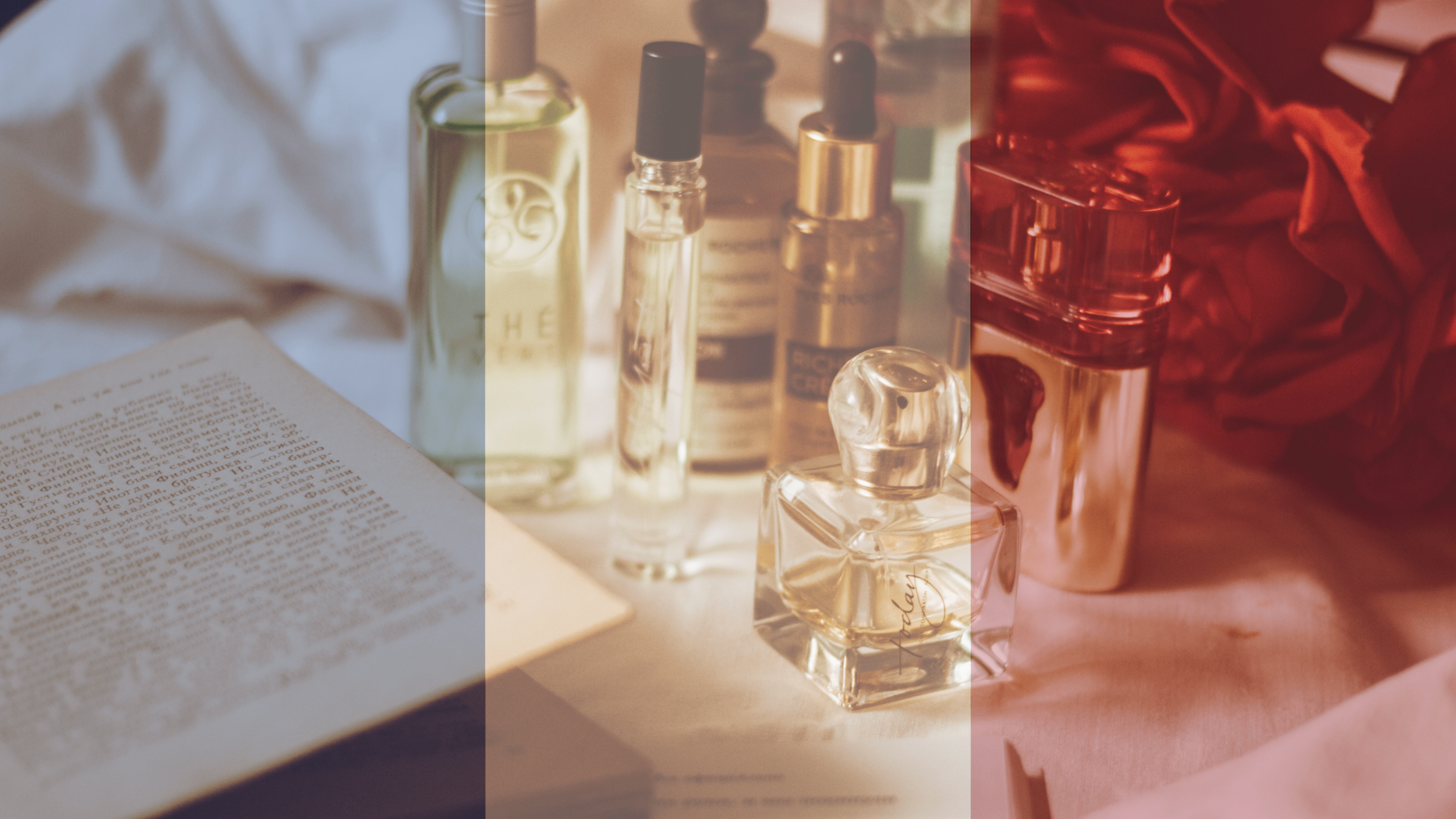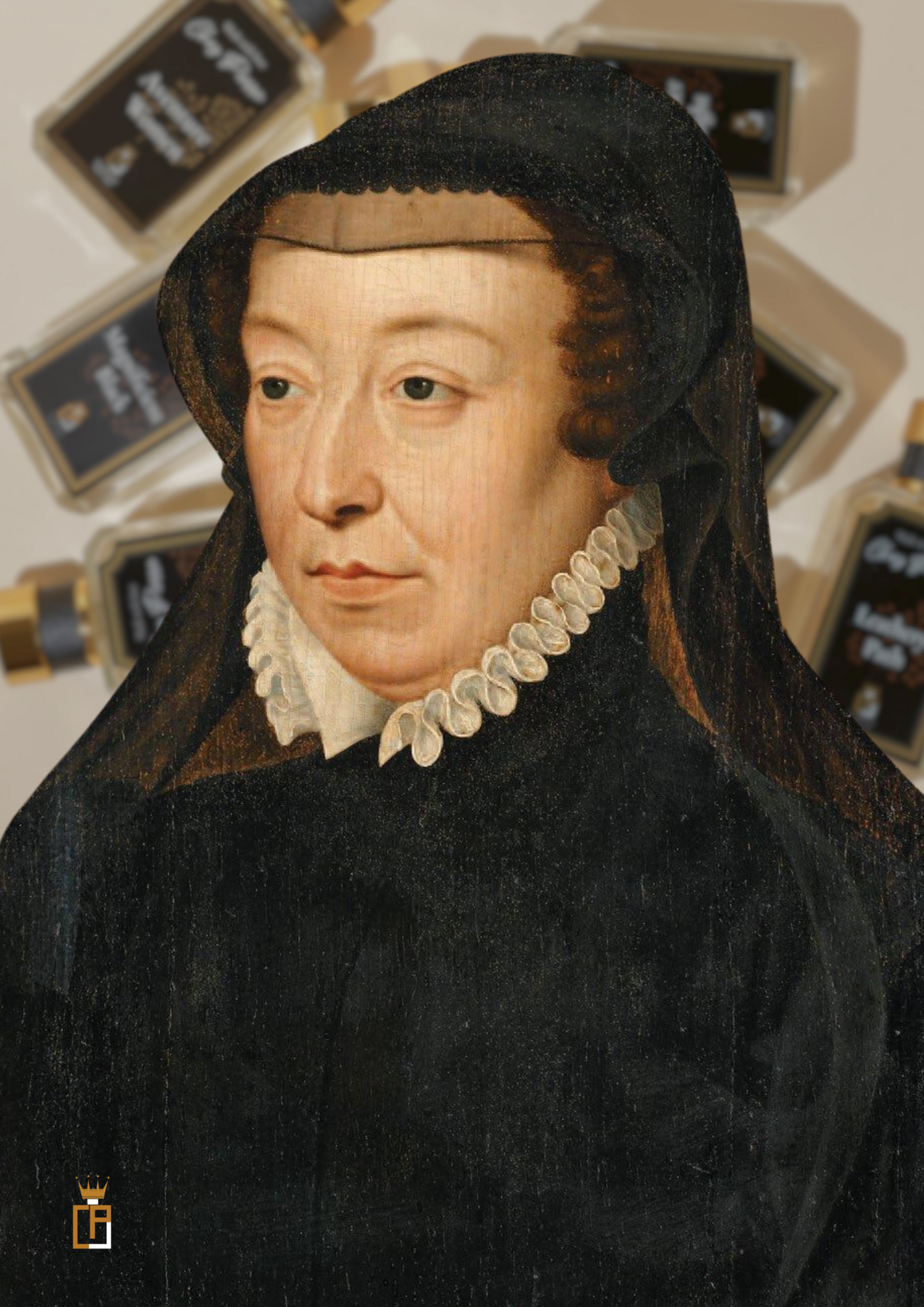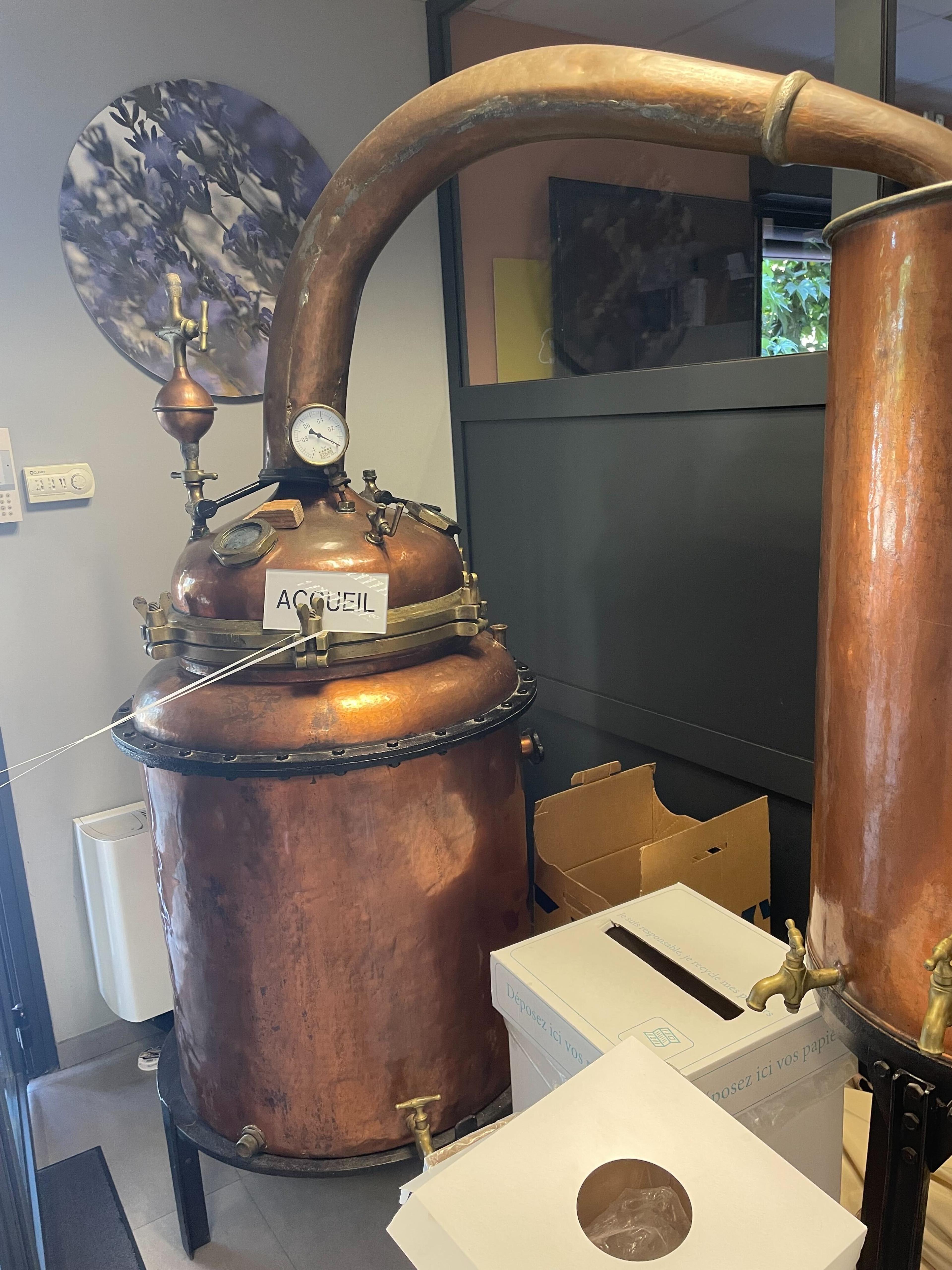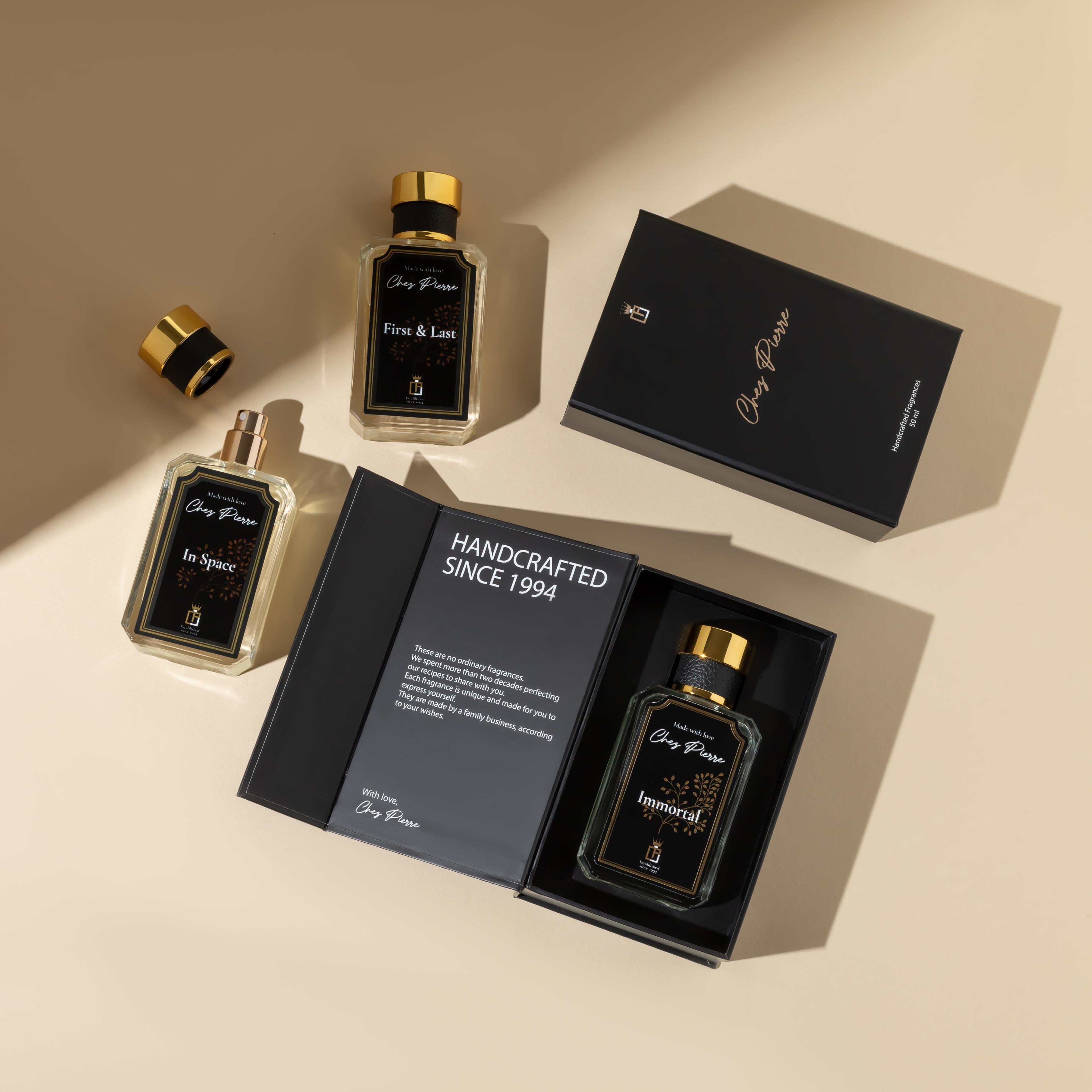
French Elegance in a Bottle: The Rise and Allure of Top Perfume Brands
Experience the allure of French perfumes, from legendary brands to hidden gems, and understand their unparalleled legacy.
Ah, the eternal debate!
So many French Perfume Brands have graced the global stage for decades. But which one is the cherry on the cake?
Mesdames et Messieurs,
Bonjour et Bienvenue to an extraordinary fragrant voyage that will open you to new scent horizons.
At Chez Pierre, your trusted guide to the finest French perfume oils, we deliver the essence of authentic French Perfumery — just a single whiff away!
Sourced directly from the heart of France, we offer both premium quality and affordability in every scent we craft.
Explore the land of perfume with Chez Pierre!
French Perfume Legacy
Perfume and France. Two words, when intertwined, evoke a rich tapestry of history, art, and passion. To understand the depth of France's fragrance legacy, let's stroll down the scented lanes of time.
During the 16th century, Catherine de Medici, the Italian noblewoman who became Queen of France, brought her personal perfumer with her to the French court.

This sparked a fascination with scents among the French elite. As the demand grew, Grasse, a region in the south of France with its ideal climate for growing aromatic plants, became the epicenter of raw materials needed for perfumery.
The 17th and 18th centuries saw a perfume boom. It was during this period that personal fragrances became an integral part of the French aristocracy. Perfumed gloves, sachets, and even scented fans became the rage.
The French court, with its penchant for luxury, often used perfumes to mask the less pleasant odors of the time. It's said that King Louis XIV was so fond of fragrances that he was nicknamed 'Le Roi Parfumé' (The Perfumed King).
The birth of modern perfumery, however, can be credited to the late 19th and early 20th centuries. Chemistry and art combined to create signature scents.
The Perfume Region in Grasse
While Paris is often considered the fashion and luxury capital of the world, when it comes to perfume, Grasse takes the crown.

An old cauldron used for destilation of perfume in Grasse
Grasse's unique microclimate makes it ideal for growing jasmine, rose, and many other flowers that form the heart of many iconic fragrances. By the 18th century, Grasse had truly established itself as the world's perfume capital.
Perfume houses in Grasse perfected the technique of enfleurage, a process used to extract the fragrance from flowers. Grasse's importance to the perfume industry is such that it's often a pilgrimage site for anyone serious about understanding the art of perfumery.

Today, while many processes have been modernized and brands have globalized, Grasse remains a symbol of tradition, expertise, and the heart of French perfume's illustrious legacy.
10 Best French Perfume Brands of Today
Designer perfumes are typically produced by large, well-known fashion or cosmetic brands with an established presence in the market. They are widely available and can be found in numerous department stores, boutiques, and online platforms.
Designer scents, while elegant, might stick to popular, proven formulas. They also benefit from the brand's existing reputation and image. These famous French perfumes often have large advertising campaigns with celebrity endorsements.
1. Chanel
Coco Chanel's legendary and the best French perfume brand represents a paragon of luxury and timeless elegance. With fragrances that are rich in history and sophistication, Chanel unquestionably continues to be a front-runner in the perfume world.
Its signature scent, Chanel No. 5, has remained an emblem of femininity in the ocean of French perfumes for ladies since its launch in 1921. Also, one of the best French perfumes for men is Blue Chance!
2. Dior
Established by Christian Dior, this brand has been synonymous with luxury, class, and cutting-edge fashion for decades. Its fragrances often reflect a perfect blend of traditional French sophistication with a dash of modernity. Scents like J'adore and Sauvage have become universally recognized.
3. Guerlain
Since 1828, their scents have been crafted with intricate detailing, often telling stories of exotic lands, romantic tales, or nature's beauty. Shalimar, for instance, remains a timeless ode to love and passion.
4. Lancôme
Emerging from its roots in skincare and cosmetics, Lancome has established itself in the perfume world with grace and beauty. Their scents, like La Vie Est Belle and Trésor, often tell tales of joy, femininity, and the essence of life.
5. Yves Saint Laurent
Representing modern fashion and innovation, YSL's fragrances often mirror contemporary sensibilities while maintaining their French essence. From the seductive Black Opium to the iconic Kouros, YSL has a varied olfactory palette catering to diverse tastes.
6. Givenchy
With an aura of French elegance blended with a touch of American glamour, Givenchy's fragrances are a sophisticated mix of tradition and modernity. Their range varies from the ethereal L’Interdit to the daring Play for Him.
7. Jean Paul Gaultier
Jean Paul Gaultier is often referred to as the "enfant terrible" of French fashion. Gaultier's fragrances, like his fashion designs, often break with tradition.
They are known for their unique compositions and instantly recognizable packaging. In 1995 "Le Mâle" for men was introduced. Its iconic torso-shaped bottle became one of the best-selling men's fragrances worldwide.
8. Hermès
While Hermes began its journey as a high-end leather goods brand, it later ventured into the fragrance world with equal elegance and attention to detail.
Their scents embody a sense of timeless luxury, often drawing inspiration from nature and elements. Terre d'Hermès, for instance, paints a picture of earthy, woody landscapes.
9. Maison Margiela
While the brand is primarily known for its avant-garde fashion designs, it has also ventured into the world of fragrances. Their fragrance line, known as "Replica," is designed to evoke personal memories and moments from specific places and times.
Each scent in the collection has a straightforward name that reflects the memory it's meant to capture, such as "By the Fireplace" (evoking cozy winter evenings).
Maison Margiela's "Replica" line can certainly be classified as niche. It's both French (given its origins and base) and niche in its fragrance style and approach.
10. Nina Ricci
Merging contemporary fashion with sophisticated romance, Nina Ricci's fragrances are pure expressions of love, youth, and joy. L'Air du Temps, with its dual doves on the cap, is an iconic scent symbolizing peace and freedom.
Why French Brand Perfumes Are the Best
What is it about French perfumes that elevate them to such legendary status? And why do they carry such hefty price tags?
Here are some factors behind the cost and the ongoing reasons of value versus price.
- Quality of Ingredients: Genuine French perfume brands often source premium natural ingredients from exclusive locations worldwide.
- Perfume Concentration: "Eau de Parfum" or "Parfum," contain a higher concentration of perfume oils compared to the more diluted "Eau de Toilette." This means they last longer on the skin and evolve intricately as the day progresses.
- Artistry & Craftsmanship: A sophisticated mix of chemistry, creativity, and sometimes, years of research. Esteemed perfumers, or 'noses' as they're often called, spend years mastering their craft, and their expertise doesn't come cheap.
- Packaging & Presentation: Luxury perfume bottles are collectible items on their own. The design, materials (often including real gold or crystal elements), and craftsmanship of these bottles contribute significantly to the overall cost.
- Branding & Legacy: Many of the renowned French perfume houses have legacies spanning centuries. The branding, advertising campaigns, (and even celebrity endorsements all factor into the retail price.)
You're not just buying a scent but also a piece of history and a brand's storied contribution.
Are They Worth It?
Value is subjective. For many, the allure of a genuine French perfume, with its depth, complexity, and lasting power, justifies the price. The experience of wearing a signature scent that evokes memories creates an aura, and boosts confidence can indeed be deemed priceless.
However, in recent years, the perfume market has seen increased sales in perfume dupes or more affordable alternatives that mimic high-end fragrances.
While some of these dupes come close to capturing the essence of their pricier counterparts, there can be nuances in the scent profile, longevity, or sillage (the trail the perfume leaves).
For those looking to experience luxury without the hefty price, these high-quality perfume dupes might be a sensible alternative.

Niche Perfumes: Art in the Bottle
Distinctly different from their commercial counterparts, niche perfumes have carved out their own space, offering unique, often artisanal, experiences to perfume connoisseurs. But what exactly sets niche perfumery apart?
The origins of niche perfumery can be traced back to individual artisans.
Disillusioned by the commercialization and homogenization of fragrances, niche creators were motivated by passion, creativity, and the desire to convey a story or emotion through their creations.
Specialized houses dedicated primarily to the art of perfumery.
The Best French Niche Perfume Brands
- Creed: Having a lineage that dates back to 1760, Creed's fragrances have adorned royalty and public figures alike. Their handcrafted scents, like Aventus, represent a unique blend of tradition and innovation. It is one of the most expensive French niche perfume brands. A 100ml bottle of Aventus might be priced at around $495 or more, depending on where you purchase it.
- Maison Francis Kurkdjian: Founded by Francis Kurkdjian in 2009, this brand has carved a niche for itself in a short span, offering unique and diverse fragrances that resonate with modern aesthetics while honoring traditional craftsmanship.
Baccarat Rouge 540 has garnered immense popularity and has often been described as a unique and captivating fragrance.
- Le Labo: This brand takes minimalism to the next level, with each scent hand-blended and named after its most significant note and the number of total ingredients. Santal 33, with its memorable woody aroma, has become a modern classic.
- Diptyque: Starting as a home fragrance brand, Diptyque transitioned to personal perfumes, capturing evocative and often whimsical scent memories. Tam Dao, an ode to the fig tree, is a masterclass in olfactory representation.
- Parfumes de Marly: Each of the brand's fragrances is an ode to the grandeur and hedonism of the 18th-century French royal court. Focus is a nod to the royal heritage and the grand horse parades that took place at the Château de Marly.
One of the brand's most celebrated creations is Herod and Pegasus. A warm tobacco-based scent with sweet undertones.
- By Kilian: Founded by Kilian Hennessy in 2007z, this brand has a collection of fragrances that are both opulent and audacious. Good Girl Gone Bad and Black Phantom are among dozens of their popular scents.
In the grand tapestry of fragrance, the threads spun by French heritage intermingle with modern mavericks, weaving stories that touch souls.
Here's to the memories bottled and those yet to be created.
Cheers!
How To Smell Good
Why Are Perfumes Expensive
How to Apply Cologne
Types Of Perfume
Eau de Parfum
Eau de Toilette
Eau de Cologne
Eau Fraiche
How to Make Perfume Last Longer
Where to Spray Perfume
How Is Perfume Made?
Best Niche Fragrance Houses and Perfumes
- Price Beyond Fragrance: Demystifying the Factors Behind Luxury Perfume Costs
- Scented Majesty: Eau de Parfum - The Undisputed Leader of Fragrances
- Unmasking the Fragrance Matrix: How Many Types of Perfume Actually Exist?
- Perfume Celebrities: Meet The Most Famous Perfume Brands In The World
- Essential Components: How Perfume is Created From Scratch
- Spritz Wisely: A Comprehensive Guide on Where to Spray Perfume
- Best Ways to Apply the Cologne-According to Our Cologne Experts